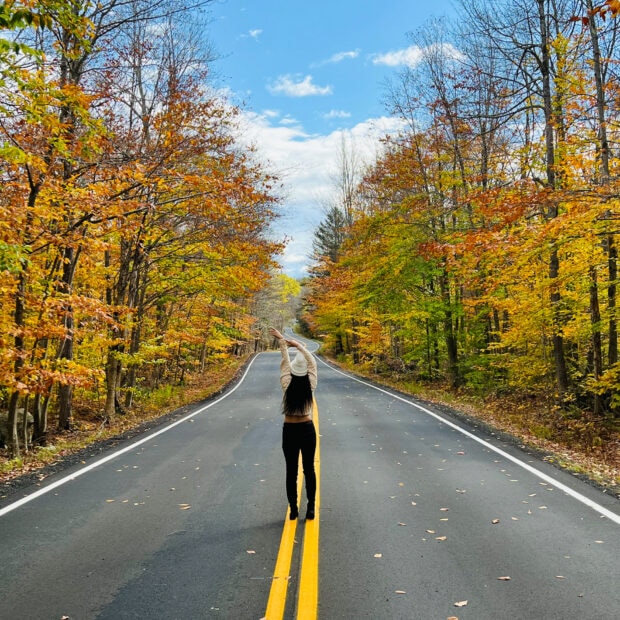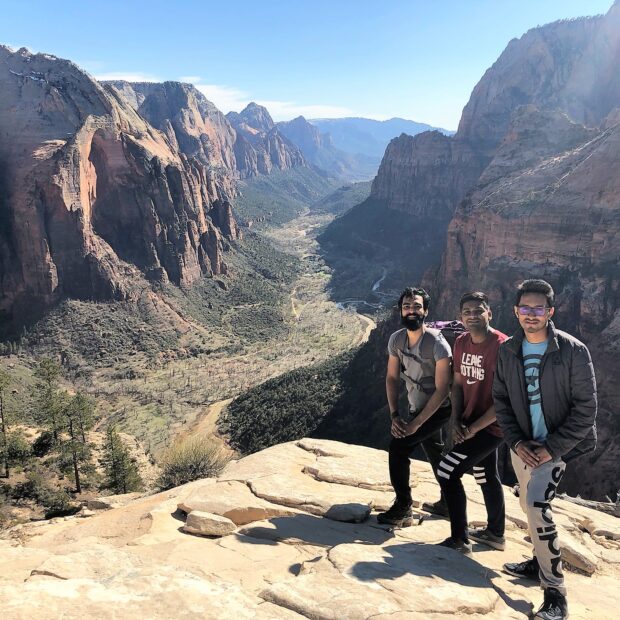We were walking through an eerie Martian landscape of reddish-brown rocks. A mist hung low on the orange mountains on both sides of me. “Mommy! Carnivorous plants!” my 5-year-old shouted. And then I realized we were walking on the inside of the Earth.
No, this is not a dream. This is the Tablelands in Gros Morne National Park, Newfoundland, Canada.
We should have known how strange and mysterious this place would be when we drove off the night ferry earlier that morning straight into an otherworldly mist in Channel-Port aux Basques, a town on the west coast of Newfoundland. The ferry to the west side of Newfoundland was cheaper than flying in or taking the ferry at St. John’s, its capital to the east. The plan was nine days of driving east and back again, camping along the way, a round-trip of about 1,900 miles (or 3,000 kilometers). Our family of five had just moved to the east coast of Canada from Vancouver Island for my husband’s education the year before. The summer break after the first year of his master’s was our first opportunity to complete the coast-to-coast trip by reaching Cape Spear, the easternmost point of North America.
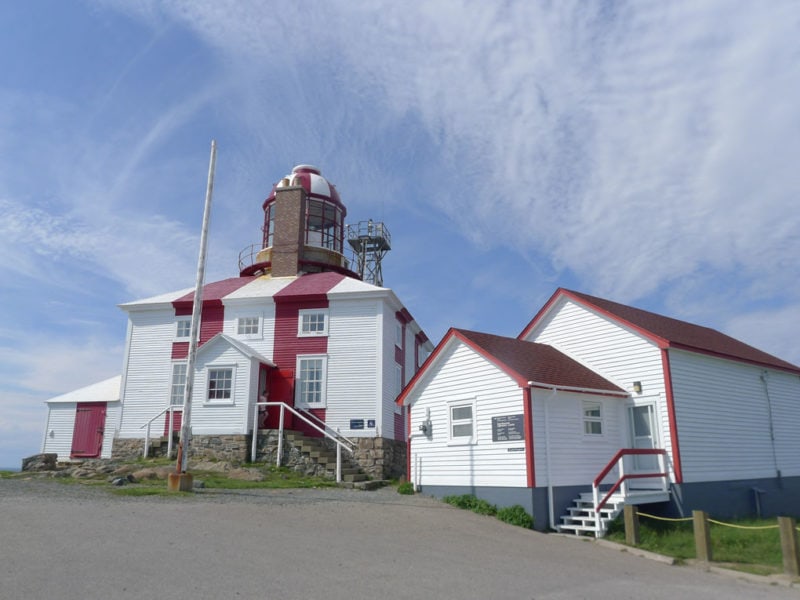
Our first stop on the trip was Gros Morne National Park, with dramatic landscapes and ancient geological features that earned it a UNESCO World Heritage status. The Tablelands trail started rocky and ended with a boardwalk to a waterfall beside a stream and some falls. On the way, the kids tried to find insects to feed the carnivorous pitcher plants they found by the stream. This is one of the few places in the world where the Earth’s mantle, the layer beneath the crust, has been pushed up to the surface. We were literally walking on what used to be the Earth’s interior.
Back on the road, the mist enveloped us again as we climbed up through mountains, every now and then getting glimpses of fjords and mountains where the mist was thin.
The wildlife is trying to eat my children
“Mommy, look, moose!” my 3-year-old said, pointing. We all looked outside in excitement, but it was only the moose on the big yellow “Be Moose Alert” highway sign. I remembered an article I had read a few months earlier about the large number of moose-related accidents on the Newfoundland highways. With 120,000 moose on an island the size of Tennessee, Newfoundland has the most concentrated moose population in the world. I hoped we’d see more moose on this trip. My personal lifetime moose count was eight, and as a new Canadian, I was trying to increase it in friendly competition with my husband who grew up with moose.
Despite the high moose population, the first wildlife my children experienced was a different m-word: mosquitoes. When we arrived at the Shallow Bay Campground at the north end of Gros Morne, a swarm of the wild vicious things descended on us while we were setting up our tent. The 3-year-old and 1-year-old both inherited my sensitivity to mosquito bites, so the next morning they looked like they both had been at the losing end of a bad fight. They were still cheerful—eyes nearly swollen shut—while they dug in the sand and built castles at the beautiful beach by the bay that morning. “It’s only this year,” the park rangers assured us when we asked about the mosquitoes.
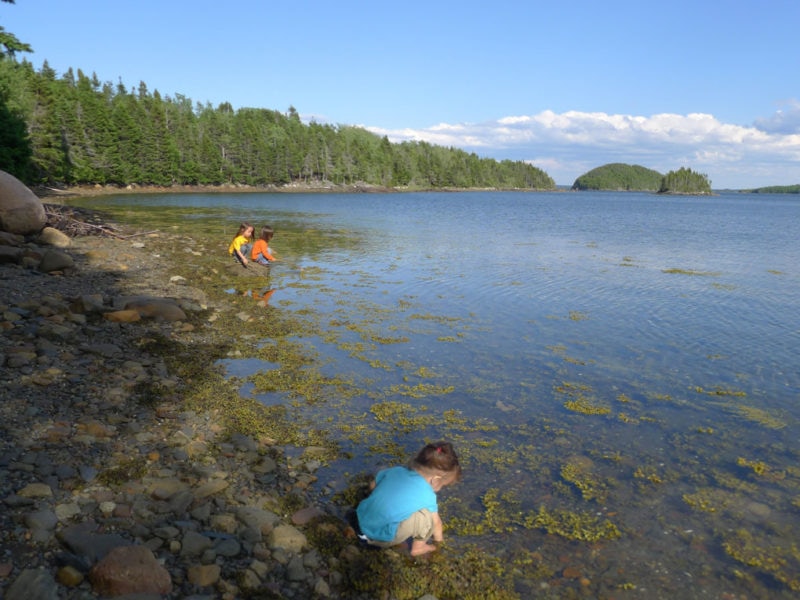
We ran away to Green Point, our next Gros Morne destination. The trail to the edge of the cliffs was through knee-high grass and the wind was so strong, we kept our heads down and held onto the kids, half-afraid they would blow away. At the point, we sat on the iconic red chairs that Parks Canada puts in places with particularly stunning views. The kids discovered the Wave Sound, a giant cone-shaped contemporary art sculpture resting on big rocks, an invitation to listen to the land. It is one of four Wave Sound projects placed around Canada by Rebecca Belmore, an Indigenous sculptor.
Iceberg chasing
From Green Point, we followed the Trans-Canada Highway east and then took Route 340 north. We passed islands and multiple charming fishing villages dotted with brightly colored houses. Looking through our map, I realized that Newfoundland was colorful in its names as well. Captain Cook and his crew appeared to have had a blast naming all the places: Devil’s Cove, Sleepy Cove, Horney Head Cove, and Cuckold Point. But the best name? Dildo Run Provincial Park. We camped there just to be able to see our parents’ faces when we told them, “We took the kids camping at Dildo Run.” It was the right choice because they also had tent sites right by the water, with a private beach where the kids played for hours. As a bonus, the sunsets were beautiful.
The road to Twillingate ended at the Long Point Lighthouse, perched on cliffs that dropped down thousands of feet with spectacular views of Fogo Island and a sea dotted with icebergs. Newfoundland is on Iceberg Alley, with prime views of icebergs that break off from Greenland and the Arctic and float south. We made our way down a trail to the cliffs, heeding the “Warning: Deadly Drop-Off” signs, hoping for a closer view. In the distance a tour boat took a group of tourists over to one of the nearest icebergs; the boat looked tiny beside the glacial giant.
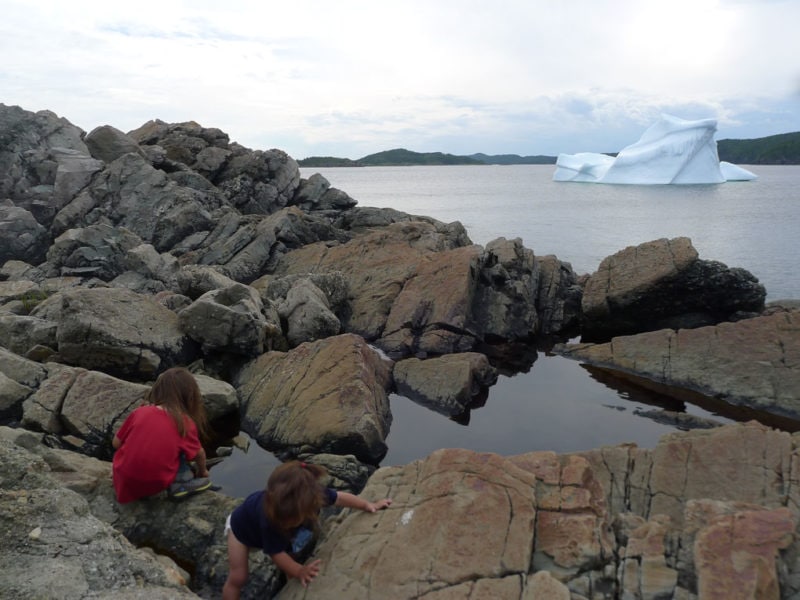
The icebergs all looked so far away up there on the cliff but we noticed a particular iceberg looked trapped in one of the bays. We went iceberg chasing, looping in and out of the unfamiliar side roads, passing more colorful houses, trying to guess which of the roads led to the elusive iceberg we could see playing peekaboo behind the numerous hills and coves that made up Twillingate and the neighboring New World Island. We saw a sign for a lookout and found a trailhead with a parking lot. Curious, we followed the trail that led us up wooden stairways, past little red huts, an outhouse, and up more wooden stairs to a platform with a bird’s-eye view of the coves and islands around us—and even more icebergs. We soaked in the sunshine and the views until my husband touched my arm. He was pointing down back toward where we had parked. “Look! Isn’t that the iceberg we’ve been looking for?”
It was. From the top, we knew exactly which road would take us there. It was a short drive to what looked like an abandoned house. We could see the iceberg, across a grassy field, its tip peeking out behind a green hill. Uncertain if the property was private, we asked a friendly local walking by. “Oh, people are used to visitors chasing icebergs here, it’s perfectly fine,” he said.
That is Newfie hospitality for you. We sprinted across the field and when we reached it, we stood transfixed, our very first up-close view of an iceberg. It looked like a ghost ship, white and immense in the daylight and close enough that my husband was able to skip a stone across the water to it.
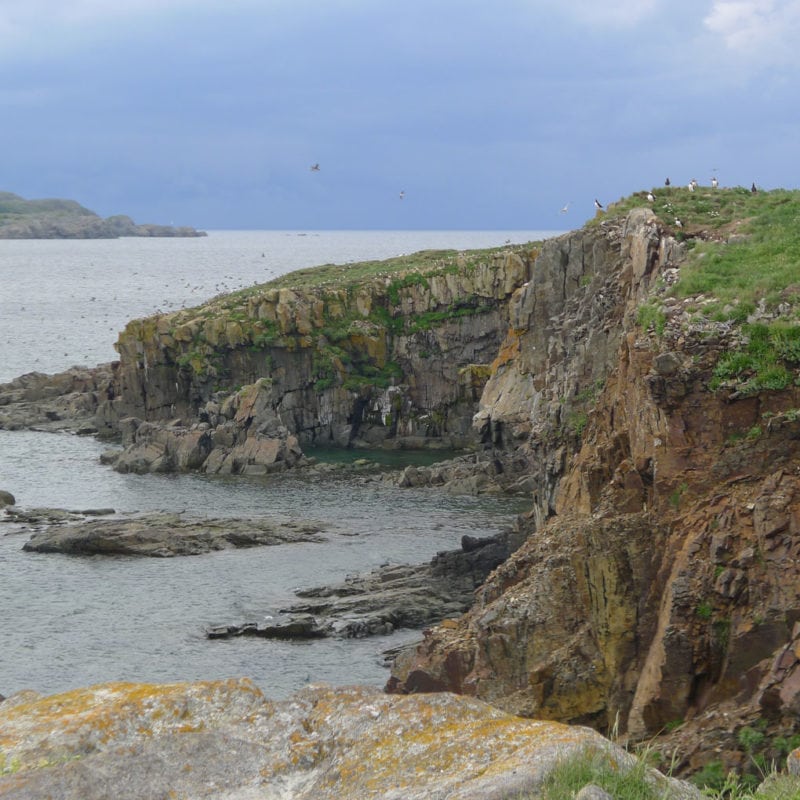
Puffins and a very wild night
We continued by heading south, joining the main highway to see the next natural wonder on our bucket list: Atlantic puffins, seabirds that come to breed and nest in burrows at the side of cliffs. Our first stop was the Bonavista Lighthouse. We followed the path toward the island just off the shore. The birds were smaller than we expected, with their white and black bodies and bright orange bills and feet. Elliston has the larger and more well-known colony. Its entrance was marked by a large puffin-shaped chair with a big “Free Admission” sign beside somebody’s house, another proof of Newfoundland hospitality. The trail to the colony went behind the house and through a field, across a narrow crossing to another island. We could see the colony so close to the land.
The small Elliston campground was already full, so we weren’t sure where we would camp that night. The tourist office told us that the John Cabot Municipal Park beside the Bonavista Lighthouse was a free campsite. We found rickety picnic tables, a large shelter, and some outhouses but no other amenities. Other than a couple who arrived later that night, we had the whole place—a grassy field bordered by jagged cliffs—to ourselves. The views were incredible and we could see icebergs in the distance. The wind blew wildly, swirling up the cliffs from the ocean below all night long and shaking our tent, but somehow we all fell asleep.
Easternmost point of North America
Cape Spear is on the Avalon Peninsula, which juts out on the eastern coast of Newfoundland south of St. Johns. The lighthouse and tip of the peninsula (the “official easternmost point” of North America) were closed for renovations. Like the good parents we are, we followed in the footsteps of some other tourists we saw in the distance and snuck in through a gap in the fence so we could say we went from Canada’s western to its easternmost end.
We camped at Butter Pot Provincial Park, conveniently located right outside of St. John’s. Early the next morning, when the sun was just starting to stretch out its rays from the horizon, I took a crying 1-year-old out of the tent to dance him back to sleep. When he was asleep again, I heard a quiet rustling noise in the forest behind the tent and turned around just in time to see a mama moose and her baby just a few feet away. “Hello, fellow mama, thank you for saying hi,” I whispered. Lifetime moose count: 10.
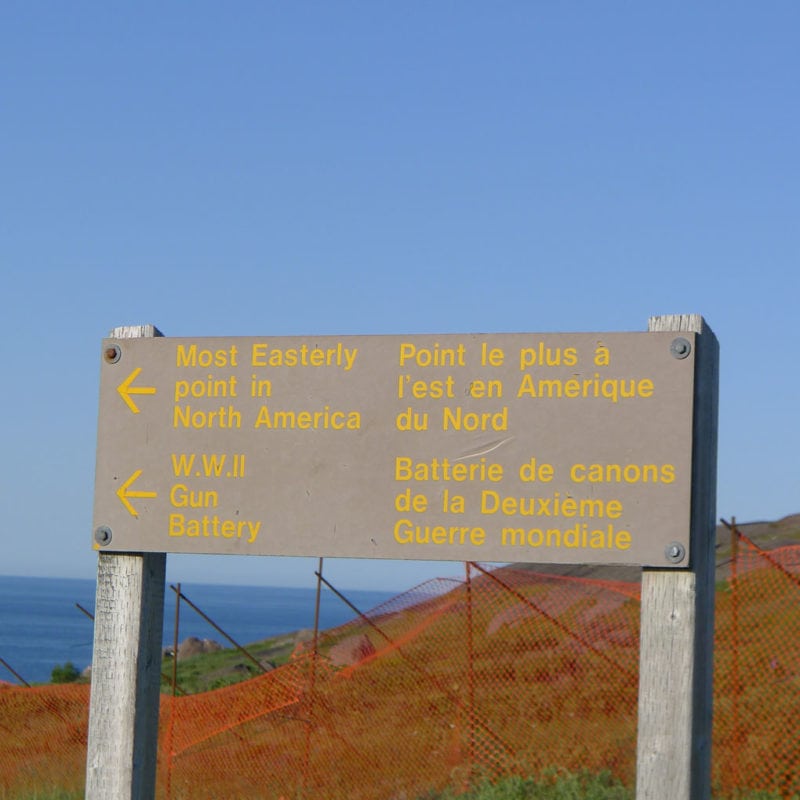
With two days left of the trip, we headed out to the white sands of Eastport Beach for some fun in the sun. A little stream came out at the right side of the beach, creating a freshwater pool that connected to the sea—an ideal place for the kids. After climbing up the trail to the shelter overlooking the beach, we noticed the water was filled with large moving swarms of silvery fish. A man, in the water to his waist and holding a net, was stealthily moving closer and closer to one of the larger schools of fish but they would move away just at the last second.
“Capelin,” a local told us when we asked about the fish. “They roll only once a year. You’re just in time.”
Once a year for a few days, we were told, the capelin come to the shores to spawn in the millions, moving closer and closer to shore until the beach is filled with little silvery fish. It’s a feast for cod, seals, whales, and seagulls. And somehow we had timed our trip to coincide perfectly with this special migration.
Driving around a neighborhood in the afternoon brought us to what appeared to be a beach trail. We followed it down some sun-bleached wooden stairs to a pebbly rocky beach where we stumbled onto one of Newfoundland’s spontaneous community pop-ups. Here were people—grandparents, kids, parents, friends, and neighbors—standing at the beach with their nets and buckets waiting for the fish to come in. Even though we were strangers, they welcomed us in. We watched the silvery fish moving closer and closer to the shore. Kids were splashing into the surf trying to catch what they could with nets or bare hands. Grandparents were watching and laughing. Someone offered my kids a net. The sun crept to the horizon and the sky turned shades of pink and orange, but the cloud of silver in the water was not quite to the shore yet.
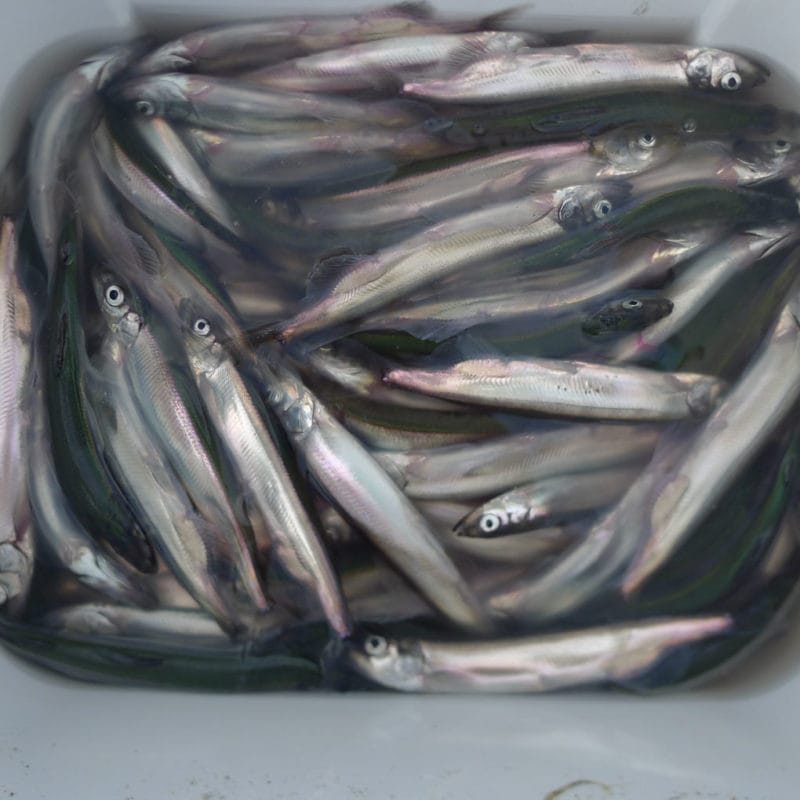
“They’re coming in!” someone shouted.
Little silvery fishes started flopping onto the sand. They were joined by more and more until the beach was alive with thousands of jumping capelin. The air was filled with excited screams and laughter as the fish-catchers madly tried to fill their containers.
On our last day in Newfoundland, we stood on top of a waterfall at Gros Morne. We started at Gros Morne and so it was fitting to end our journey here too. The kids survived a mosquito swarm attack and their faces no longer looked so misshapen. We had chased icebergs, gone puffin watching, and reached the end of the world. We touched immense passages of time and walked in another world. It’s not a dream. It’s Newfoundland.
